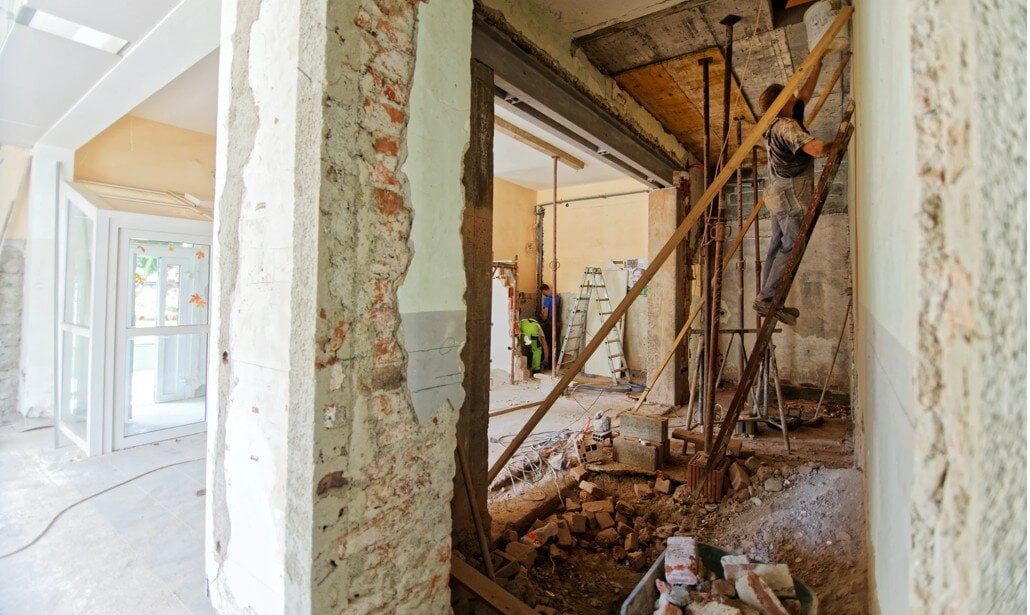If you’re moving into a fixer-upper or simply renovating your own home, you should seriously consider doing so with sustainability in mind. Sustainable materials not only decrease your impact on the environment and function just as well as their less-sustainable counterparts, but you also end up saving a huge amount of money throughout the lifetime of your home as well.
Easy On The Earth…
While many newer homes already use sustainable materials in their construction, if you’re living in an older home or purchasing a previously owned home, you’re likely to find a huge number of green improvements you can make.
Aside from the use of sustainable materials in a remodel or renovation of your home, it’s also important to take a holistic approach by focusing on energy efficiency and capitalizing on any materials from the original construction you might be able to use. While sustainable materials are great, nothing is better for the environment than simply using what you already have.
Improvements you can make range from installing super-efficient windows to help regulate temperature to installing a green roof to further help with heating and cooling costs. Nearly every aspect of your home can be made more green and sustainable in some way. Even a thousand small improvements will make a huge impact in the long run.
…And On Your Wallet
Though there is an inherent reward of good stewardship of the earth when sustainably renovating or remodeling, there’s a concrete financial benefit as well. Not only will making your home more eco-friendly save on power bills, but making these improvements improves the value of your home immensely.
New homes are incredibly expensive, and it isn’t an outrageous fear that a loan for a new home would be denied. This makes investing in the home you already live in a smart move. You’ll be able to make sustainable improvements to your current home that will make it the home of your dreams, help the environment, and act as a long-term investment for your future should you ever decide to sell.
Deciding to renovate your home using sustainable materials and energy-efficient appliances isn’t just some ethereal investment in the planet’s future, but a real investment for yourself that can help add a layer of security in the future that otherwise might not have been there.
Remodeling and renovating a home is no small task and will likely require a good chunk of change along with a great deal of time. By choosing to implement any changes with sustainability in mind, you’ll save yourself some worry down the line as you’ll already be one step ahead of the curve. Sustainable materials will only become more popular and ubiquitous in home construction, and there is nothing wrong with being an early adopter when it comes to saving the planet!
10 Amazing things you did not know about sustainability at home
Sustainability at home involves making choices that minimize environmental impact and promote a healthier, more eco-friendly lifestyle. Here are 10 amazing things you may not know about sustainability at home:
- Composting Benefits:
- Fact: Composting kitchen waste, such as fruit and vegetable scraps, coffee grounds, and eggshells, not only reduces landfill waste but also produces nutrient-rich compost that can enhance soil fertility in your garden.
- Energy-Efficient Appliances:
- Fact: Energy-efficient appliances, such as ENERGY STAR-rated products, can significantly reduce your household energy consumption. These appliances use less energy, saving you money on utility bills and reducing your carbon footprint.
- Solar Cooking:
- Fact: Solar cookers use sunlight to cook food, eliminating the need for conventional energy sources. They are an eco-friendly option for preparing meals and are particularly useful in regions with abundant sunlight.
- Upcycling Furniture:
- Fact: Instead of discarding old furniture, consider upcycling or repurposing it. With a bit of creativity, you can give old pieces new life, reducing the demand for new furniture and minimizing waste.
- Rainwater Harvesting:
- Fact: Collecting rainwater for use in gardening or landscaping is an efficient way to conserve water resources. Rain barrels or harvesting systems can be installed to capture and store rainwater for later use.
- Reusable Beeswax Wraps:
- Fact: Beeswax wraps are a sustainable alternative to plastic wraps for food storage. They are reusable, washable, and made from natural materials, reducing plastic waste in the kitchen.
- Eco-Friendly Cleaning Products:
- Fact: Many household cleaning products contain harsh chemicals that can be harmful to the environment. Choosing eco-friendly alternatives or making your cleaning solutions using natural ingredients can contribute to a greener home.
- Smart Thermostats:
- Fact: Installing a smart thermostat allows you to optimize your home’s heating and cooling systems. These devices can learn your preferences, adjust temperatures based on your schedule, and help reduce energy consumption.
- Bamboo Products:
- Fact: Bamboo is a highly sustainable material due to its rapid growth. Using bamboo products, such as utensils, cutting boards, and even flooring, can help reduce reliance on less sustainable materials.
- Zero-Waste Grocery Shopping:
- Fact: Embracing a zero-waste lifestyle at the grocery store involves using reusable bags, and containers, and buying in bulk to minimize packaging waste. Some stores even allow customers to bring their containers for certain items.
By incorporating these sustainable practices into your daily life, you can contribute to a more environmentally friendly and eco-conscious home. Each small change adds up to make a positive impact on the planet and promotes a more sustainable future.
Related posts:







